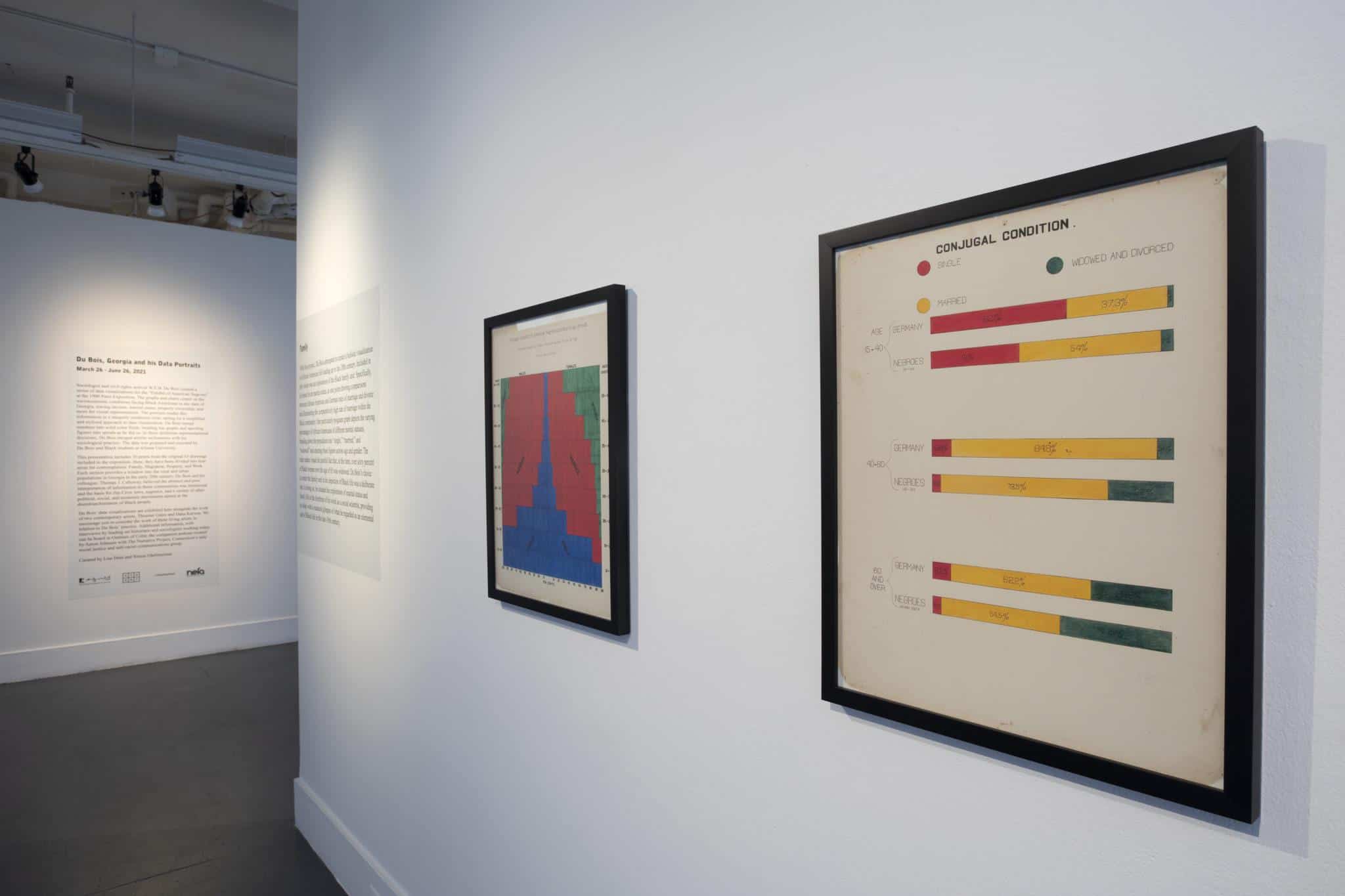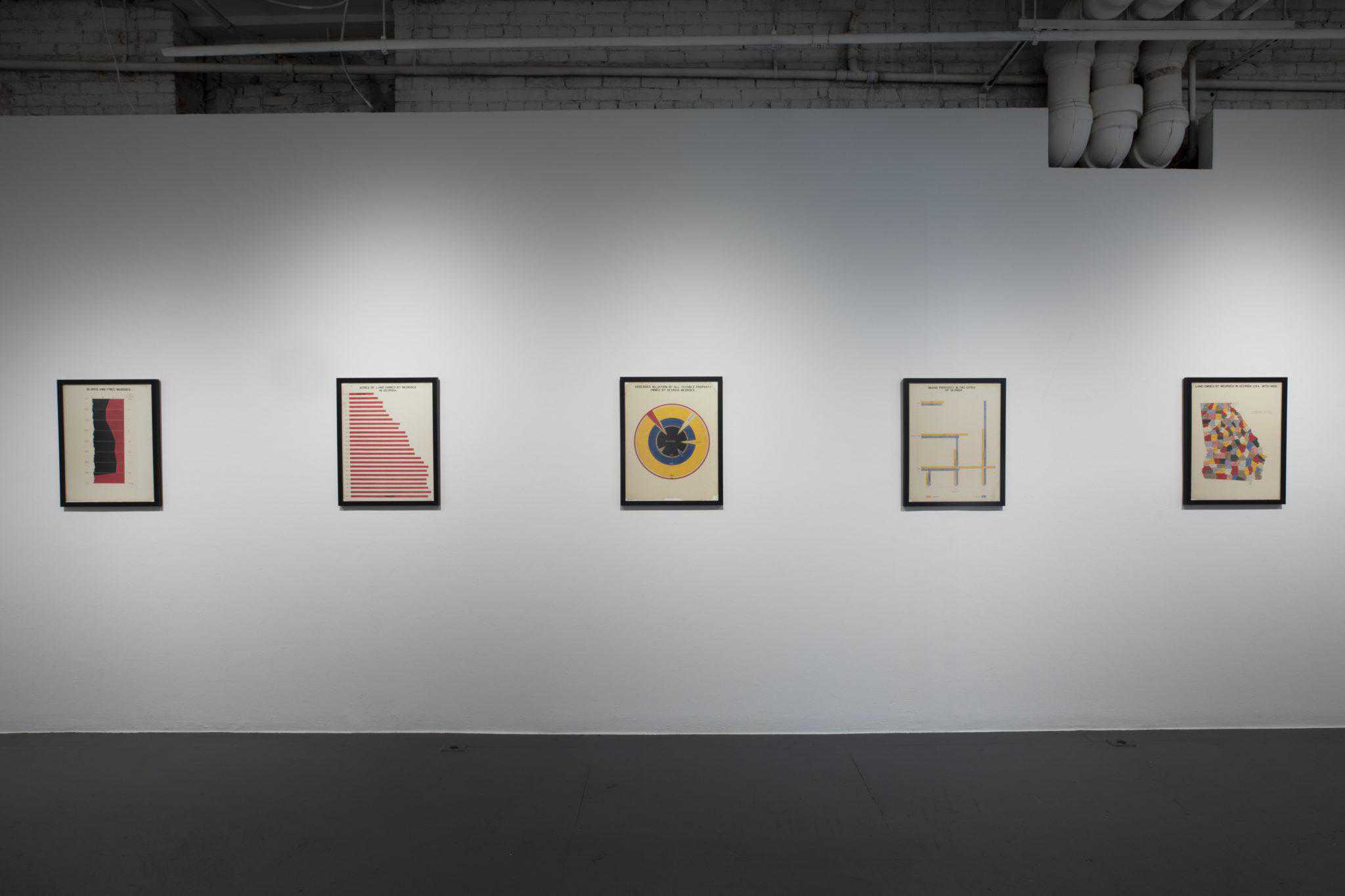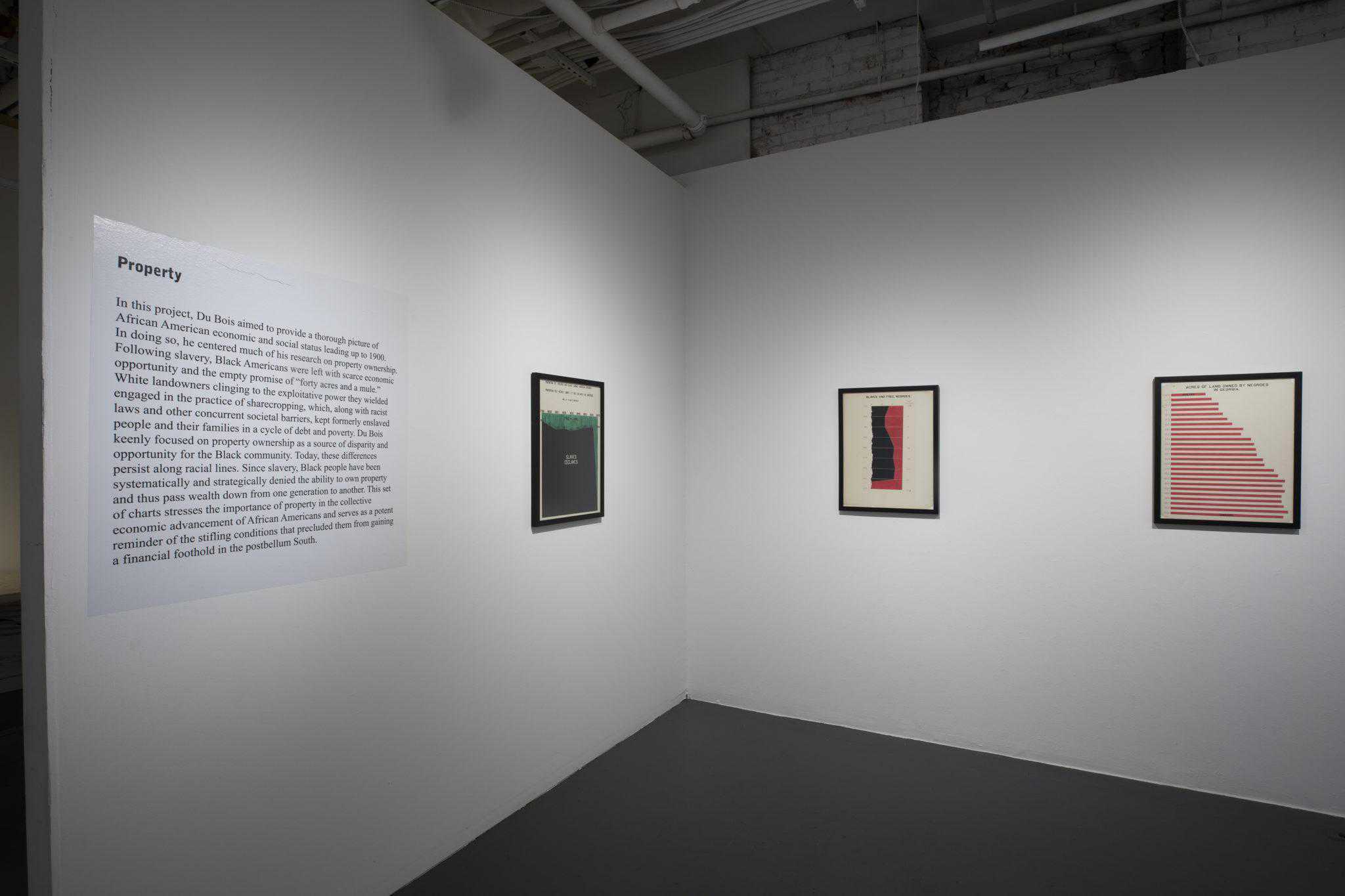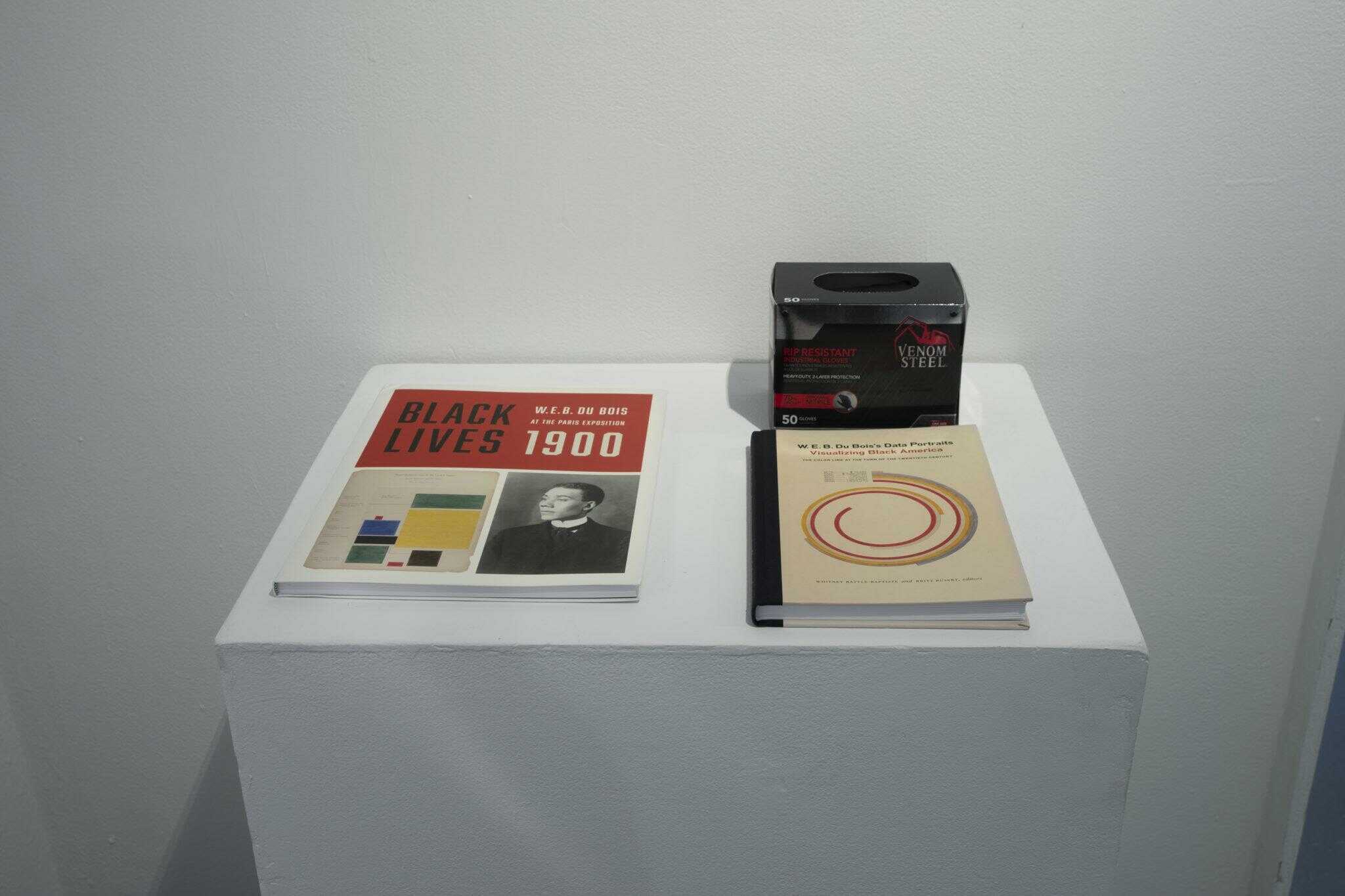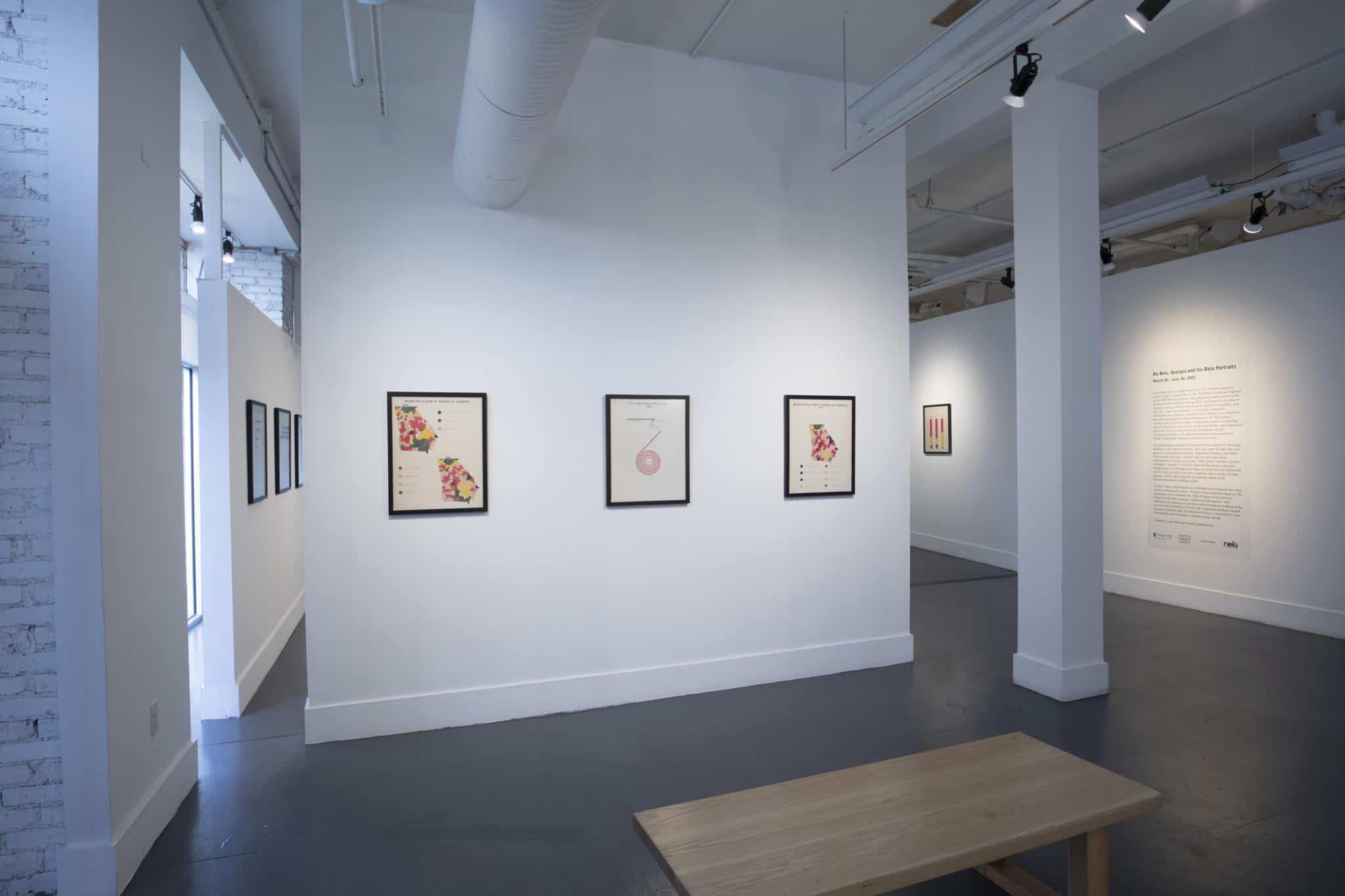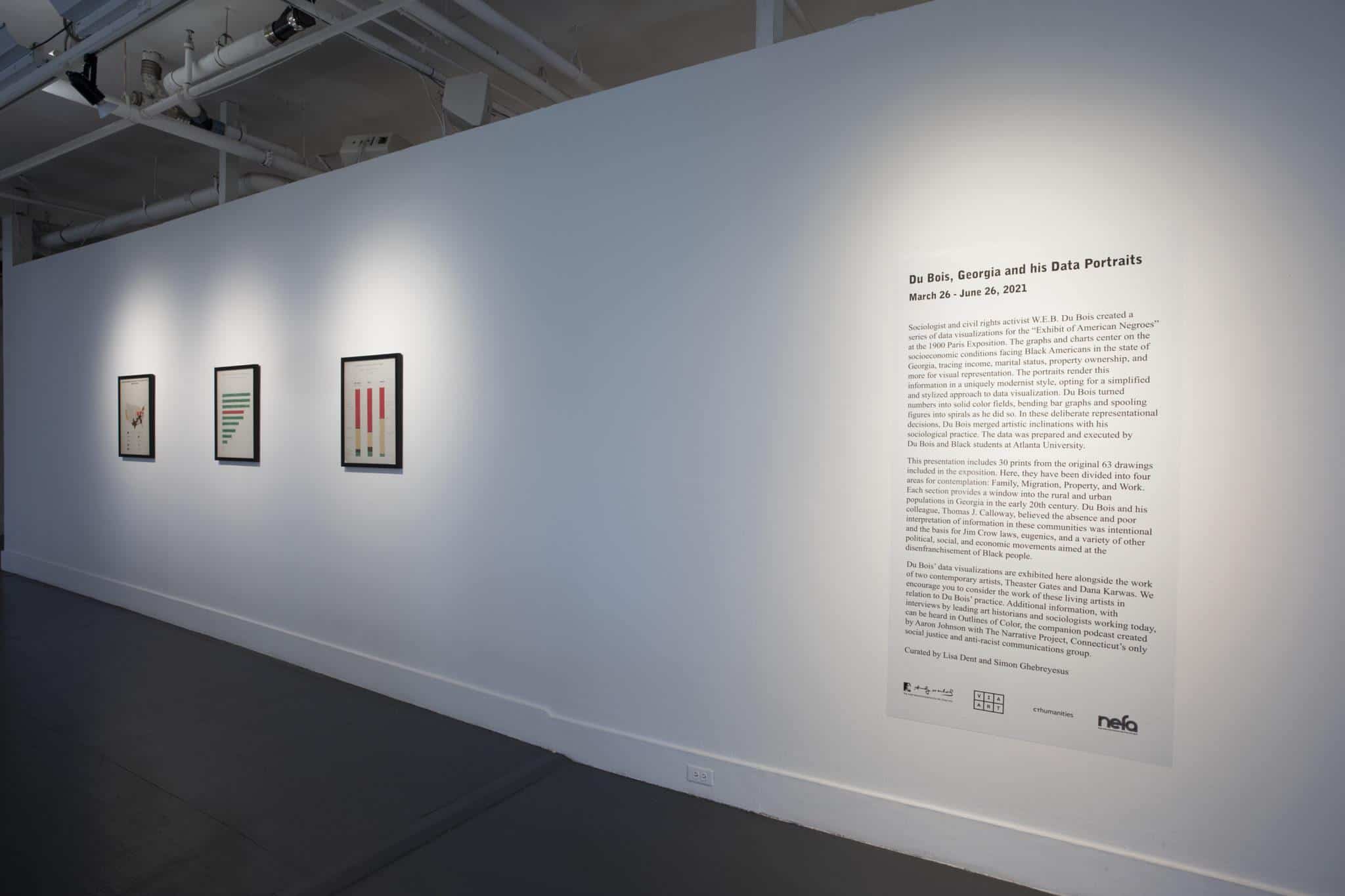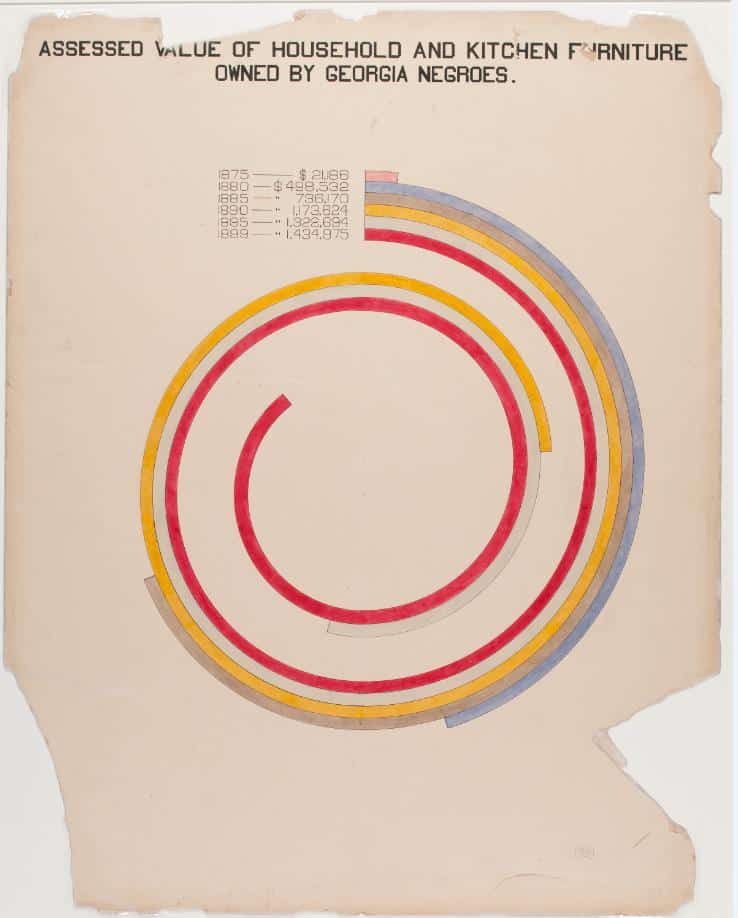In 1900, sociologist and civil rights activist W.E.B. Du Bois created a series of data visualizations for the “Exhibit of American Negroes” at that year’s Paris Exhibition. The graphs and charts center on the socioeconomic conditions facing Black Americans in the state of Georgia, tracing income, marital status, property ownership, and more for visual representation.
The portraits render this information in a uniquely modernist style, opting for a simplified and traditional approach to data visualization. Du Bois turned numbers into solid color fields, bending bar graphs and spooling figures into spirals as he did so. In these deliberate representational decisions, Du Bois merged artistic inclinations with his sociological practice.

